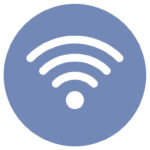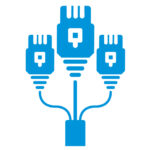- info@unisolcommunications.com
- +91 98800 09520 / +91 98860 03890

WI-FI
Are there moments in your life when you pause to consider how something you use every day actually works? Ever wondered how computers actually interact wirelessly with each other?
What do you think about that? That is exactly the question we are going to be discussing in today's article.
What Is WiFi?
Here are some basic concepts to get you started: Wifi stands for Wireless Fidelity and is the same thing as WLAN, which stands for "Wireless Local Area Network" (WLAN).
Wi-Fi, a wireless networking technology that uses radio waves to facilitate high-speed data transport across short distances.
Unlicensed usage of the radio airwaves at frequencies of 900 megahertz (MHz), 2,4 GHz and 5,8GHz was made possible in 1985 by a U.S. Federal Communications Commission judgement.
In recent years, Wi-Fi has been rapidly increasing. As Wi-Fi enables local area networks to operate without wires and cabling, it is a popular choice for home and business networks. For many modern devices, such as laptops, smartphones, tablets and electronic game consoles, Wi-Fi can also be utilised to provide wireless broadband Internet access via wireless broadband.
When Wi-Fi-enabled devices are near regions with Wi-Fi access, referred to as "hot spots," they can connect to the Internet. Many public facilities, including airports, hotels, bookstores, and coffee shops, now provide free Wi-Fi. Some cities have built free Wi-Fi networks that are available across the city. Wi-Fi Direct, a type of Wi-Fi that doesn't require a LAN, allowing devices to connect without one.
How Does Wi-Fi Work?
In a WiFi network, radio waves are used to send data across a network. A wireless adaptor should be included in the computer, which will convert data provided into a radio signal. The identical signal will be sent to a decoder known as the router through an antenna. The data will be delivered to the Internet over a connected Ethernet connection once it has been decrypted.
The data obtained from the internet will also flow through the router to be coded into a radio signal that will be received by the computer's wireless adapter because the wireless network is a two-way traffic system.
To adjust to the quantity of data being provided by the user, a wireless network will transmit at a frequency level of 2.4 GHz or 5GHz. The 802.11 networking standards will vary a bit based on the user's needs, but not by a huge amount.















